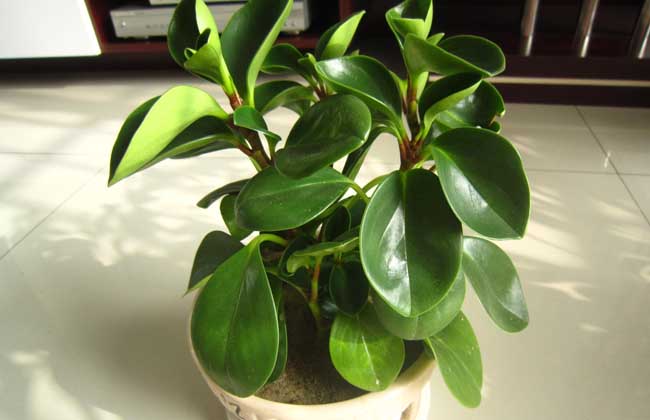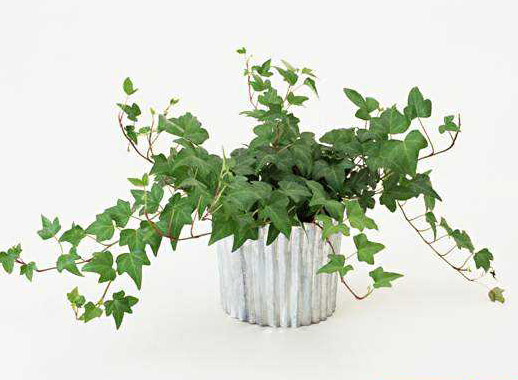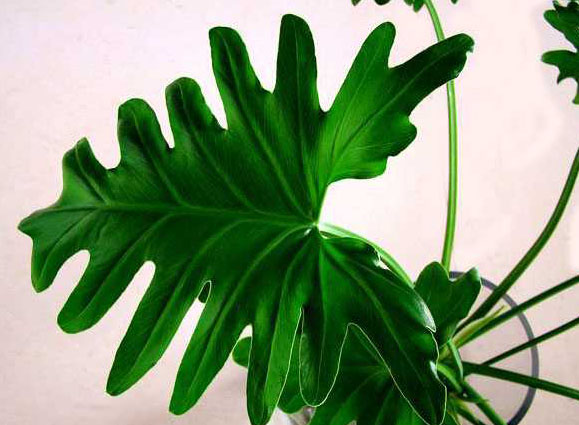How to propagate and maintain Douban Green
Douban green pepper grass, emerald pepper grass, green leaf Jasper, Douban Ruyi. It is a perennial evergreen herb of Piperaceae. Leaf blade ovoid, petiole and branches crimson. Spikes, dense florets, green-white. The common cultivated varieties are flower leaf bean petal green, white leaf bean petal green, and the same genus of foliage flowers are wrinkled leaf pepper grass, watermelon pepper grass and so on.
Sexual preference for warm, humid and semi-overcast environment, fear of high temperature, avoid strong light, should be loose, fertile, well-drained soil.
The method of cutting or dividing plants can be used for propagation. Cuttings should be cut at the top in late spring and early summer, with a length of about 10 cm. With 3-4 leaves, insert them into plain sand, keep them moist, and take root after about 3 weeks. Mature leaves can also be cut, with petioles about 2 cm long and inserted in a shallow basin filled with plain sand. After insertion, the basin soil is often kept moist and can take root after about 3 weeks. Ramet should be carried out in spring and autumn.
Potted Douban green should choose 6 parts of rotten leaf soil (or peat soil), 3 parts of garden soil and 1 part of coarse sand. During the growth period, dilute liquid fertilizer was applied once every 3 to 4 weeks. Watering should be dry and wet, and avoid stagnant water in the basin. It is advisable to spray fresh water on the stems and leaves once or twice a day in dry climate and summer to keep the leaves green. Douban green is more shady, the four seasons can be cultivated indoors with bright scattered light, more light can be seen in spring and autumn, it can be cultivated near the south windowsill, proper shading and ventilation should be paid attention to in summer, and watering should not be too much.
In hot summer, when it is hot and wet, the basal leaves are easy to rot. Watering should be controlled when the winter room temperature is low; the suitable growth temperature is 20-25 degrees Celsius, and the overwintering room temperature should be maintained within 12-15 degrees Celsius. In order to make the branches and leaves plump and green, a short cut should be carried out every 2 years to promote the germination of new branches.

Branch cutting method
The effect of terminal bud cutting is the best in the propagation of bean green branch cutting. the two-year-old branches with a sturdy length of 8 cm and 10 cm are generally selected from May to June. There are 3 nodes, truncated at 0.5 cm below the node. The upper part with 3-5 leaves, put it in a ventilated and cool place for 2 hours, after the incision is slightly dry, cut in the culture soil of rotten leaf soil and garden soil, pour enough water and put it in the shade. Often keep the basin soil moist, 20 days later can take root, when the root length of 3 cm, can be maintained on the basin.
Leaf insertion method
The green leaf insertion propagation of bean clove is best carried out in May every year in East China. The robust and mature leaves in the middle and lower part of the plant are taken, and the whole leaves with petioles are removed. After drying for half a day, place the petiole at a 45 °tilt in a shallow basin filled with frogstone or sand to keep it moist. When the temperature is about 25 ℃, the root system can be formed in about 25 days, and the leaves can be maintained in the pot when there are 3-4 leaves. When inserting leaves, do not use plastic film or glass to cover and moisturize the basin mouth, otherwise it is easy to cause decay.
Split-plant method
Douban green plant separation method is mainly used for the reproduction of colored leaf varieties, basin soil can be made of rotten leaf soil, peat soil plus part of perlite or sand, and add appropriate amount of base fertilizer. During the growing period, topdressing should be applied once a month, watering should be done with 1-2 days of water in the pool, and watering should be controlled in winter. The change of temperature directly affects the color of leaves. The optimum temperature of colored leaves in winter is 18 ~ 20 ℃, and that of green leaves is about 15 ℃. If you are afraid of heat in hot summer, you can spray water under the shade to cool down, but it should be noted that overheating and humidity will cause stems and leaves to blacken and rot. Place plenty of light in winter and avoid direct sunlight in summer. The basin is changed every 2-3 years.
How to propagate Douban Green the breeding method of Douban Green
"Douban Green breeding methods and matters needing attention" has been introduced to you, that Douban Green how to reproduce? Let's learn about the breeding method of Douban green.
Propagation method of Douban Green
1. Split-plant method: when the plant is full, the plant is poured out and divided into several pots for planting.
2. Branch cutting method: the effect of terminal bud cutting is the best, generally selecting two-year-old branches with 8-10 cm in length from May to June. There are 3 nodes, truncated at 0.5 cm below the node. The upper part with 3-5 leaves, put it in a ventilated and cool place for 12 hours, after the incision is slightly dry, cut in the culture soil of rotten leaf soil and garden soil, pour enough water and put it in the shade. Often keep the basin soil moist, 20 days later can take root, when the root length of 3 cm, can be maintained on the basin.
3. Leaf insertion: East China had better be carried out in May every year. Take the robust and mature leaves in the middle and lower part of the plant, and pick off the whole leaves with petioles. After drying for half a day, place the petiole at a 45 °tilt in a shallow basin filled with frogstone or sand to keep it moist. When the temperature is about 25 ℃, the root system can be formed in about 25 days, and the leaves can be maintained in the pot when there are 3-4 leaves. When inserting leaves, do not use plastic film or glass to cover and moisturize the basin mouth, otherwise it is easy to cause decay.
Multipurpose cuttage and plant division propagation
Cuttings: from April to May, select robust top branches, about 5cm as cuttings, and keep 2 leaves in the upper part of the cuttings. After the cut is dried, they are inserted into the wet sand bed. You can also insert leaves, cut the leaves with petioles with a knife, dry them slightly, then insert them obliquely on the sand bed, and take root in 10-15 days. In a greenhouse with temperature control equipment, it can be carried out all year round.
Ramet: mainly used for the reproduction of colored leaf varieties. The basin soil can be made of rotten leaf soil, peat soil and part of perlite or sand, and an appropriate amount of base fertilizer is added. During the growing period, topdressing should be applied once a month, and watering should be controlled in winter with the water that has been released into the pool for 2 days. The change of temperature directly affects the color of leaves, the optimum temperature in winter is 18-20 ℃ for colored leaves and about 15 ℃ for green leaves. If you are afraid of heat in hot summer, you can spray water under the shade to cool down, but it should be noted that overheating and humidity will cause stems and leaves to blacken and rot. Place plenty of light in winter and avoid direct sunlight in summer. Change the basin every 2-3 years.
[how to hydroponic culture]: Douban green is an excellent living model in hydroponic culture, with 4-5 leaves per plant, which is very easy to adapt to the water environment, will not decay, and is easy to grow.
Like warm and humid semi-shady environment, not resistant to high temperature, avoid direct sunlight; resistant to drought, watering should not be too much, especially in autumn and winter to reduce watering. If the air is dry, you can spray more water to the leaves and avoid frost.
[how to cultivate soil]: the Douban green cultivation substrate requires organic substrates with good air permeability and good water retention, such as peat soil plus perlite or vermiculite, the proportion is about 6:1, avoid too much water in the cultivation substrate, and generally maintain 40-60% water content in the cultivation substrate.
Usually placed in a bright indoor or open-air shade, the optimum temperature is 20-26 ℃, and the winter temperature is above 5 ℃. The leaves are often sprayed with water to maintain high air humidity. It can also be properly trimmed or transplanted in the courtyard for viewing after a period of time.
The above is the introduction of Douban green how to reproduce, friends who want soil culture and water culture can know about it.
- Prev

What do you need to pay attention to in breeding ivy?
Foreign ivy is mainly propagated by cutting. The sturdy twigs should be cut from June to August, and each segment should have more than 3 nodes at least. Soak the cuttings in water before insertion, and then insert them for easy survival. Pour water after insertion and cover with plastic film to maintain air humidity
- Next

How to maintain Chunyu / Golden Diamond
Spring feather is known as spring taro and golden diamond. It is a perennial evergreen herb of the genus Colocasia of Araceae. The stem is short, tufted, the leaf is huge, the whole leaf is pinnately parted, leathery. The potted growers are smaller. The leaves are dark green, smooth and shiny. Sexual preference for warm, humid environment, shade tolerance, fear of direct exposure to strong light
Related
- Fuxing push coffee new agricultural production and marketing class: lack of small-scale processing plants
- Jujube rice field leisure farm deep ploughing Yilan for five years to create a space for organic food and play
- Nongyu Farm-A trial of organic papaya for brave women with advanced technology
- Four points for attention in the prevention and control of diseases and insect pests of edible fungi
- How to add nutrient solution to Edible Fungi
- Is there any good way to control edible fungus mites?
- Open Inoculation Technology of Edible Fungi
- Is there any clever way to use fertilizer for edible fungus in winter?
- What agents are used to kill the pathogens of edible fungi in the mushroom shed?
- Rapid drying of Edible Fungi

